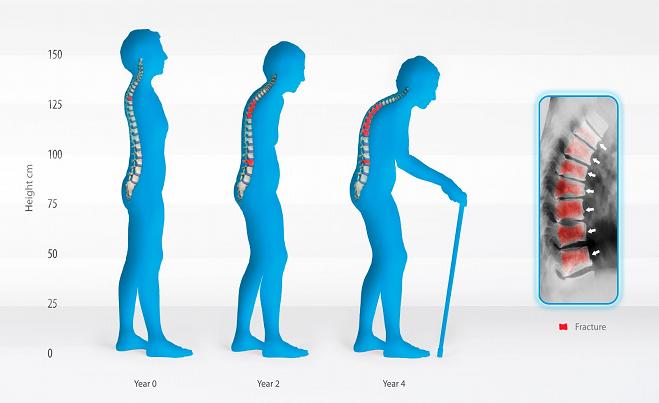Osteomalacia Symptoms, Causes, Diagnosis and Treatment

What Is Osteomalacia?
The medical term is characterized by softening of bones. Osteomalacia arises due to the deficiency of vitamin D. It also occurs when ability of the body to use and break down vitamin D is affected, as the vitamin helps to absorb calcium.
In order to maintain the hardness and strength of the bones, our body requires calcium. Thus, the condition, osteomalacia makes the bones and muscles weak.
What Are The Symptoms Of Osteomalacia?
Few common symptoms of osteomalacia are as followed:
- Muscle weakness.
- Frequent bone fractures.
- Widespread bone pain, particularly in hips.
Low levels of calcium can also result in the arousal of the following symptoms:
- Spasm of feet or hands.
- Numbness of legs and arms.
- Numbness around your mouth.
When Is The Right Time To Seek Medical Assistance?
In case you feel to be at an increased risk of developing osteomalacia or have actually developed the symptoms of the disorder, then do not delay to call up for an appointment with a health care provider.
What Causes Osteomalacia?
When the body lacks sufficient vitamin D, osteomalacia occurs. This deficiency can be caused by:
- Some conditions that affect the ability of the body to absorb vitamin D, for example intestinal disorders including celiac disease and Crohn’s disease.
- Some conditions that affect the activation and production of vitamin D, such as kidney disorder.
- Consuming a diet deficient in vitamin D.
- Lack of sun exposure.
- Rare tumors.
- Vitamin D is malabsorbed by your intestines.
- Some medications such as the ones used for treating seizures.
- A rare type of osteomalacia is inherited.
What Are The Complications Of Osteomalacia?
The disorder can lead to weakening of bones and muscles. Moreover, after being treated, the symptoms can reappear.
How Is Osteomalacia Diagnosed?
During the visit, you will be asked to detail about your symptoms. The doctor can suggest blood tests in order to check:
- Alkaline phosphatase.
- Electrolytes.
- Phosphate.
- Calcium.
- Creatinine.
- Vitamin D.
- Parathyroid hormone levels.
In order to detect bone softening, bone loss and pseudofractures, doctor can recommend:
- Bone density test.
- Bone X-ray.
In rare instances, doctor can suggest bone biopsy. This will help him determine the presence of bone softening.
How Is Osteomalacia Treated?
The treatment of osteomalacia involves supplements of phosphorus, calcium and vitamin D.
What Is The Prognosis Of Osteomalacia?
Indeed, the outlook is good with prompt and continuous treatment, yet healing can take around 6-10 months.
What Is Osteomalacia Preventable?
Yes, the disorder is preventable. By following the below mentioned suggestions, one can greatly prevent osteomalacia.
- Consume a diet enriched with vitamin D.
- Add foods that contain calcium in your diet chart.
- Sun exposure is important as sunlight is the source of vitamin D.
- Drink a glass of milk every day to obtain calcium.
By : Natural Health News




